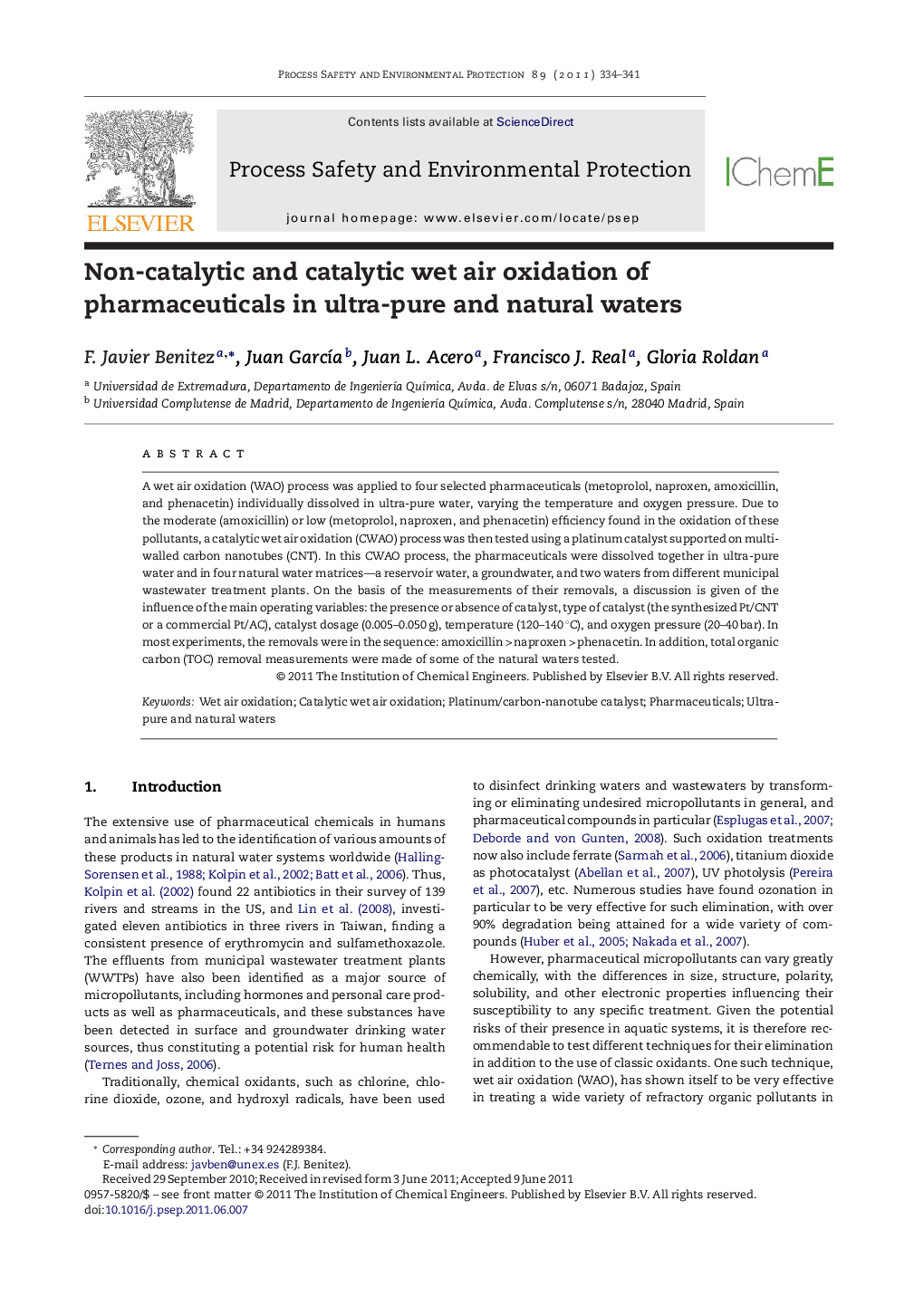| کد مقاله | کد نشریه | سال انتشار | مقاله انگلیسی | نسخه تمام متن |
|---|---|---|---|---|
| 588581 | 878583 | 2011 | 8 صفحه PDF | دانلود رایگان |

A wet air oxidation (WAO) process was applied to four selected pharmaceuticals (metoprolol, naproxen, amoxicillin, and phenacetin) individually dissolved in ultra-pure water, varying the temperature and oxygen pressure. Due to the moderate (amoxicillin) or low (metoprolol, naproxen, and phenacetin) efficiency found in the oxidation of these pollutants, a catalytic wet air oxidation (CWAO) process was then tested using a platinum catalyst supported on multi-walled carbon nanotubes (CNT). In this CWAO process, the pharmaceuticals were dissolved together in ultra-pure water and in four natural water matrices—a reservoir water, a groundwater, and two waters from different municipal wastewater treatment plants. On the basis of the measurements of their removals, a discussion is given of the influence of the main operating variables: the presence or absence of catalyst, type of catalyst (the synthesized Pt/CNT or a commercial Pt/AC), catalyst dosage (0.005–0.050 g), temperature (120–140 °C), and oxygen pressure (20–40 bar). In most experiments, the removals were in the sequence: amoxicillin > naproxen > phenacetin. In addition, total organic carbon (TOC) removal measurements were made of some of the natural waters tested.
► WAO of pharmaceuticals in ultra-oure water provided low to moderate removal efficiencies.
► CWAO significantly enhanced the degradations.
► A synthesized platinum catalyst supported on multiwalled carbon nano tubes (Pt/CNT) was used.
► CWAO experiments were applied to the pharmaceuticals dissolved in four real water matrices with relevant eliminations.
Journal: Process Safety and Environmental Protection - Volume 89, Issue 5, September 2011, Pages 334–341